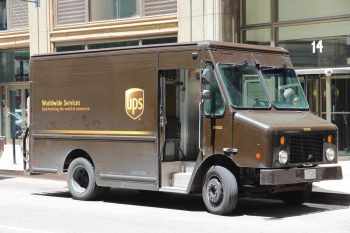
In the digital age, email communication has become an integral part of our daily lives, but so have email scams. One such scam that has been on the rise involves emails purporting to be from the United States Postal Service (USPS). In this comprehensive guide, we will explore how to tell if a USPS email is real and provide tips to help you avoid falling victim to such scams.
You can tell if a USPS email is real by checking for official USPS branding, business-related content, encryption for sensitive information, and multifactor authentication. Real USPS emails will not send unsolicited package notifications or ask for personal information. Be wary of generic greetings, poor grammar and spelling, urgent-sounding messages, suspicious links or attachments, and requests for personal information. When in doubt, verify the sender’s email address and the information in the email by visiting the official USPS website or contacting USPS customer service.
Overview
Email scams often involve phishing attempts, where scammers try to trick recipients into revealing sensitive information such as passwords and credit card details. One common method involves sending an email that appears to be from a trusted source, like USPS.
Identifying a Real USPS Email
Real USPS emails have certain common features that can help you identify them. These include:
- Official USPS Branding: Legitimate emails from USPS will have the official logo and branding, making them look authentic.
- Business-Related Content: USPS emails are meant for business purposes only. They should not contain any personal or promotional content.
- Encryption for Sensitive Information: When sending sensitive information through email, USPS employees are required to encrypt the content by adding #sensitive# to the subject line.
- Multifactor Authentication: USPS has implemented multifactor authentication (MFA) for accessing their online services. This requires users to provide two or more confirmation factors to gain access to an online account.
- No Unsolicited Package Notifications: USPS does not send text messages or emails about unclaimed packages or delivery attempts without the customer first requesting the service with a tracking number.
- No Requests for Personal Information: Legitimate USPS emails will not ask you to provide personal information or click on links to confirm your personal delivery information.
Common Signs of a Fake USPS Email
Fake USPS emails or phishing emails often share certain characteristics, including:
- Generic or Inconsistent Greeting: Fraudulent emails often use generic greetings like “Dear Customer” instead of addressing you by your name.
- Poor Grammar and Spelling: Scammers often use poor grammar and spelling as many of them are not native English speakers.
- Urgent-Sounding Messages: Scammers try to create a sense of urgency to trick you into acting without thinking.
- Suspicious Links or Attachments: Be wary of any emails that prompt you to click a button or download an attachment. These can often lead to phishing websites or download malware onto your computer.
- Requests for Personal Information: Legitimate USPS emails will never ask you to provide personal information or payment for package deliveries.
What to Do if You Receive a Suspicious USPS Email
If you receive a suspicious email claiming to be from USPS, follow these steps:
- Do not click on any links or open any attachments.
- Check the sender’s email address. It should be from a legitimate USPS domain (e.g., @usps.com or @uspis.gov).
- Look for any grammar or spelling errors within the email.
- Verify the information in the email by visiting the official USPS website or contacting USPS customer service.
- Forward the suspicious email to [email protected] for investigation.
Consequences of Falling for a USPS Email Scam
Falling for a USPS email scam can have serious consequences, including identity theft, financial loss, and unauthorized access to personal information. To avoid falling for such scams, always verify the sender’s email address, do not click on suspicious links or attachments, and never give out personal information in response to an unsolicited email.
Conclusion
With the rise of email scams, it’s more important than ever to stay vigilant and protect yourself from potential threats. By following the tips and guidelines outlined in this article, you can ensure that you’re able to identify a real USPS email and avoid falling victim to scams. Always remember: when in doubt, reach out to USPS through their official channels to verify any suspicious emails.
Frequently Asked Questions
What should I do if I accidentally clicked on a link in a suspicious USPS email?
If you’ve accidentally clicked on a link in a suspicious email, it’s important to act quickly. First, disconnect your device from the internet to prevent any further data transmission. Then, run a full system scan with a reliable antivirus software to check for any malware. Change your passwords, especially for any accounts that contain sensitive information. Monitor your accounts for any unusual activity and report the incident to your local authorities and the USPS.
Is it safe to respond to a suspicious USPS email to tell the sender to stop emailing me?
No, it’s not recommended to respond to a suspicious email. Responding can confirm to the scammers that your email address is active and can lead to you receiving more phishing attempts. Instead, report the email to USPS by forwarding it to [email protected] and then delete the email.
How can I report a potential USPS email scam?
If you receive a suspicious email that appears to be from the USPS, you can report it by forwarding the email to [email protected]. Be sure to include as much information as possible, such as the sender’s email address, the date and time you received the email, and any links or attachments in the email. After forwarding the email, delete it from your inbox.
Can USPS email scams affect my mobile device?
Yes, USPS email scams can also affect mobile devices. If you access your email on your phone or tablet, you can still be targeted by these scams. The same rules apply: don’t click on suspicious links, don’t download unexpected attachments, and don’t provide personal information. Make sure to keep your device’s operating system and security software up to date to protect against malware.












